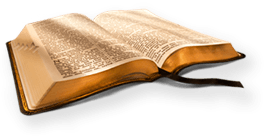King James Bible
King James Version (KJV)


"A basalt stone, bearing an inscription by King Mesha, which was" "discovered at Dibon by Klein, a German missionary at Jerusalem," in 1868. It was 3 1/2 feet high and 2 in breadth and in "thickness, rounded at the top. It consisted of thirty-four" "lines, written in Hebrew-Phoenician characters. It was set up by" Mesha as a record and memorial of his victories. It records (1) "Mesha's wars with Omri, (2) his public buildings, and (3) his" wars against Horonaim. This inscription in a remarkable degree supplements and corroborates the history of King Mesha recorded in 2 Kings 3:4-27. "With the exception of a very few variations, the Moabite language in which the inscription is written is identical with the Hebrew. The form of the letters here used supplies very important and interesting information regarding the history of "the formation of the alphabet, as well as, incidentally," regarding the arts of civilized life of those times in the land of Moab. "This ancient monument, recording the heroic struggles of King "Mesha with Omri and Ahab, was erected about B.C. 900. Here "we" have the identical slab on which the workmen of the old world "carved the history of their own times, and from which the eye of" their contemporaries read thousands of years ago the record of "events of which they themselves had been the witnesses." It is" "the oldest inscription written in alphabetic characters, and" "hence is, apart from its value in the domain of Hebrew" "antiquities, of great linguistic importance."